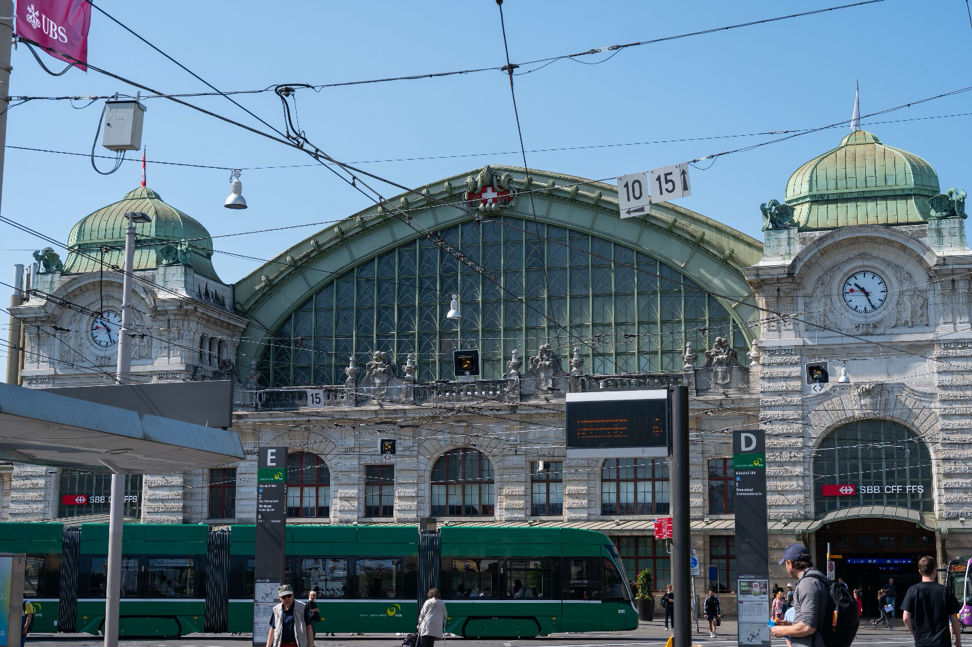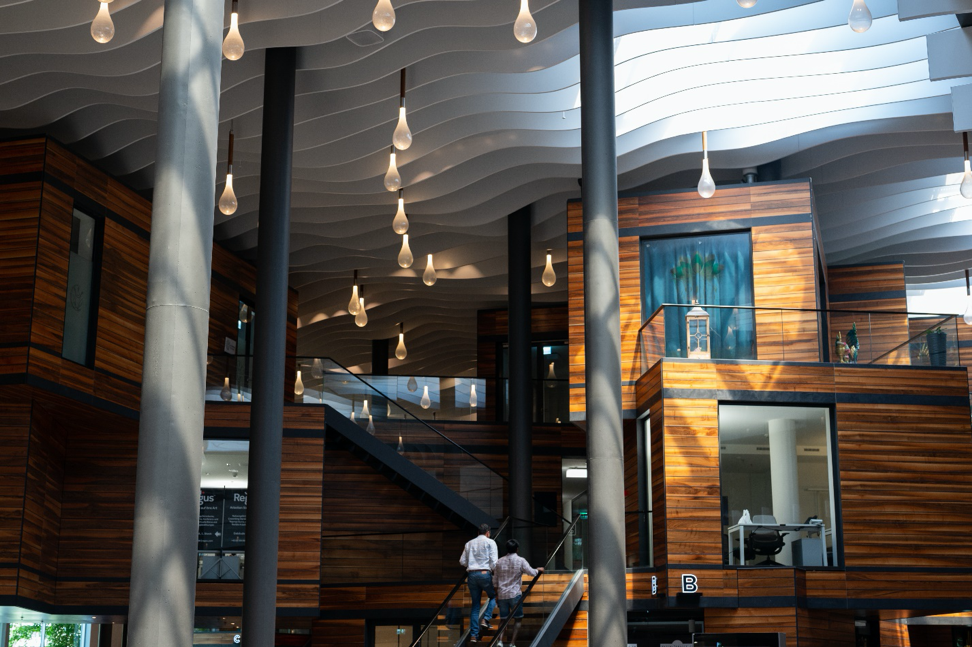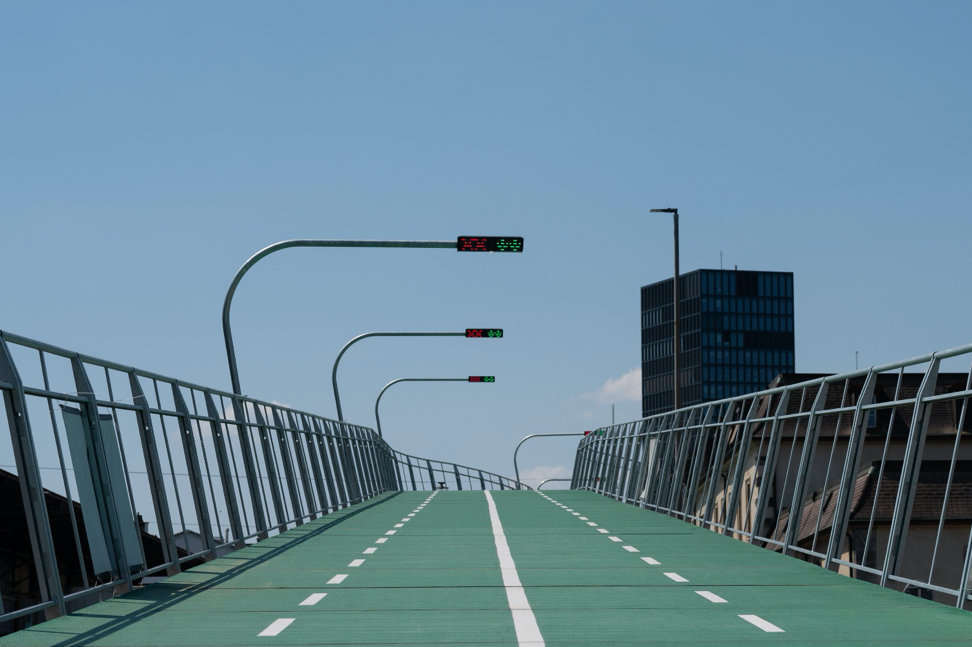Basel: On the border of Switzerland, Germany and France
June 13, 2023
On yet another busy day on the 2023 Burch Sustainability Program, the group took a trip with Steffen of Innovation Academy to Basel, a gorgeous city situated right at – and in some places, over – the borders of Switzerland, Germany, and France. The day began with a relaxed regional train ride from Freiburg down to Basel which gave us about an hour to admire the beautiful German countryside.
The sights weren’t the only thing we were looking out for, though. We were also keeping an eye out for signs of Basel’s remarkable tri-national collaborations. The first one we saw was our arrival train station, Basel Bad Bf, which is technically in Switzerland but functions almost like a German embassy for trains in that the land is legally German. Furthermore, while most of the core city of Basel lies in Switzerland, large parts of the city also reach into France and Germany including even the tram lines and The Rhine – just by sitting in a boat, tram, or bus, or even just on foot, you can quickly pass through three countries and back again!
When we arrived, we passed the train station borderline (making sure we weren’t carrying more than €10,000) and took one of the many trams over to the massive Swiss train station, Basel SBB, where we got a briefing from Steffen. As it turns out, that was just one of many trams. The Swiss city of Basel is extremely wealthy with an average annual income of $200k according to Steffen, so it is able to afford many times more tram lines than Freiburg, but it also needs them to support the 70k people who cross the border each day from France and Germany. In fact, the city has more jobs than workers living in the city! As we will discover later, this commuter wealth disparity has posed some unique challenges for the local economy.
After boarding those same train lines again, we arrived at our first real stop: the campus of the pharmaceutical corporation Novartis. Pharmaceuticals and chemicals comprise over 50% of Switzerland’s exports and the two huge multinational companies among these, Novartis and Hoffmann-La Roche, are both based in Basel and provide huge sources of employment. We toured the buildings of the former and Steffen pointed out the nearby waste incinerator, which provides heat to much of the city. Gleaming complexes aside, the industry has a troubled past. In the 1980s, large industrial sites were located all along the Rhine River in Basel, particularly for chemical storage. In 1986, a warehouse belonging to the chemical company Sandoz caught fire and almost entirely burned down. During the fire and the firefighters’ attempts to fight it, thousands of tons of pesticides and mercury spilled into the river alongside 20 tons of red fire suppressant foam. The result: a river dyed red and purged of almost all life in the river downstream for 180 km. The river was so toxic that multiple people were hospitalized just for breathing fumes from chemicals in the water, all while Germany and France, downstream from the fire, were forced to watch as the blight spilled across national borders in one of the greatest environmental disasters in European history. As tragic as this disaster was, it served as the impetus for the tight tri-national collaboration we experienced, especially with regard to the environment.
Indeed, we were able to take a boat powered only by river currents across with no fume inhalation and today, a favorite hobby is to put one’s belongings in a waterproof bag and swim home from work!
We then took a tram to Stücki Park, which was a victim of those same trams. It was designed as a high-end shopping mall just a few years ago but because the costs in Germany and France were so much cheaper, commuters would simply cross the border to go shopping. The parking center thus had to reinvent itself as a shared living and innovation space.

Finally, we went to an appointment at the Swiss railway company’s Smart City Labs. This four-year project invited tiny startups to work in a former railway warehouse complex – rent-free – on smart city technologies to be integrated into that very same complex when it gets turned into a massive housing and community development once the project’s four years are up. One of the most exciting ideas we saw was a modular overhead bike ‘highway’ system built out of wood and powered by solar panels for de-icing and traffic control.

About the Author
This article was written by Joey Clampett, Class of 2025, a Computer Science B.S. & Environmental Science B.S. (Energy Management) major.
